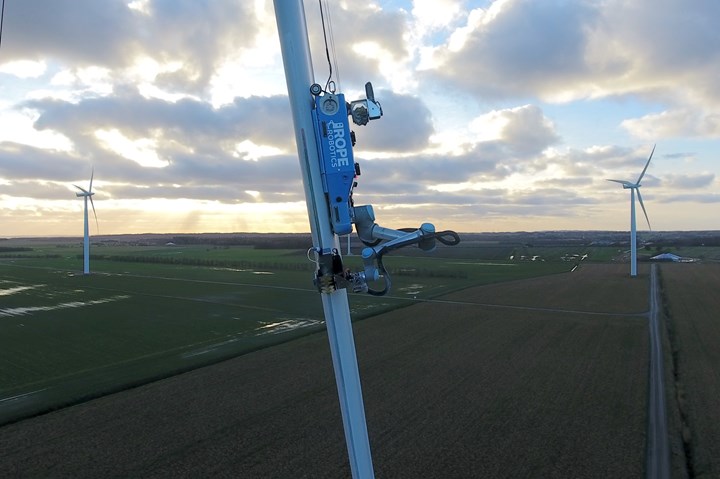On the radar: Automated wind blade maintenance
Several companies are making headway to ease the challenging, dangerous and manual job of wind turbine blade upkeep.
Maintaining the structural integrity of wind blades is no easy feat. Their longevity is affected by the nature of their operation: Harsh conditions (wind and rain) lead to erosion, fatigue over time can result in cracking and lightning strikes, which, if not properly protected again them, can cause a blade to break or catch fire. Not to be forgotten are mechanical components which wear out over time, and the fact that wind turbines are tall, large and often installed in remote locations. All of these points lead to the need for constant manual maintenance, which can be equally challenging and dangerous.
A trend in automated wind blade maintenance repair has been increasingly brought to our attention. While this list is not extensive, and does not represent all of the innovations available on the market, it does give us a glimpse into how manufacturers are using automation to advance what is considered to be the the fastest growing renewable energy sources in the world:
- In December 2022, Vestas announced a standalone business for leading edge maintenance. This includes the development of the wireless, automated BladeRobot system.
- Aerones is a service provider for robot-enabled wind turbine maintenance and inspections. Its own robot system is capable of performing repairs for Level 1-3 leading edge erosion, while also making use of digital twin technologies.
- Hitachi Power Solutions is implementing AI and drones to ensure greater safety and security at wind power facilities, particularly those damaged in Japan by lightning strikes and typhoon winds. Its technology enables it to “accumulate more specific knowledge” of its wind blades to optimize future maintenance.
- Rope Robotics’ patented robot specializes in onshore wind blade management, restoring “up to 3% energy output within less than one day per blade at half the cost of manual solutions.”
- Mistras Group has developed a remote rotor blade monitor to offer edge-to-edge intelligence that detects and reports damage in real time.
For more of CW’s On the Radar trends, read “Cryogenic testing of composites for future hydrogen storage.”
Related Content
-
Novel composite technology replaces welded joints in tubular structures
The Tree Composites TC-joint replaces traditional welding in jacket foundations for offshore wind turbine generator applications, advancing the world’s quest for fast, sustainable energy deployment.
-
Composites end markets: Batteries and fuel cells (2024)
As the number of battery and fuel cell electric vehicles (EVs) grows, so do the opportunities for composites in battery enclosures and components for fuel cells.
-
Collins Aerospace to lead COCOLIH2T project
Project for thermoplastic composite liquid hydrogen tanks aims for two demonstrators and TRL 4 by 2025.











.jpg;maxWidth=300;quality=90)

